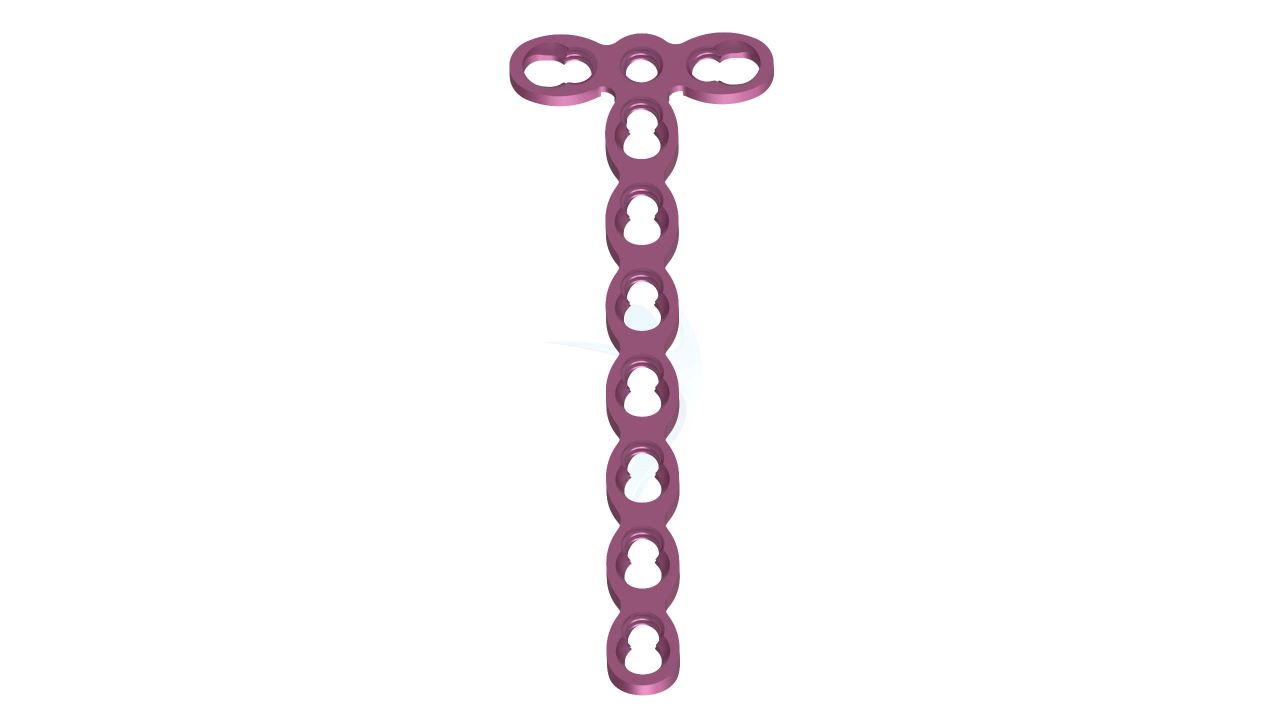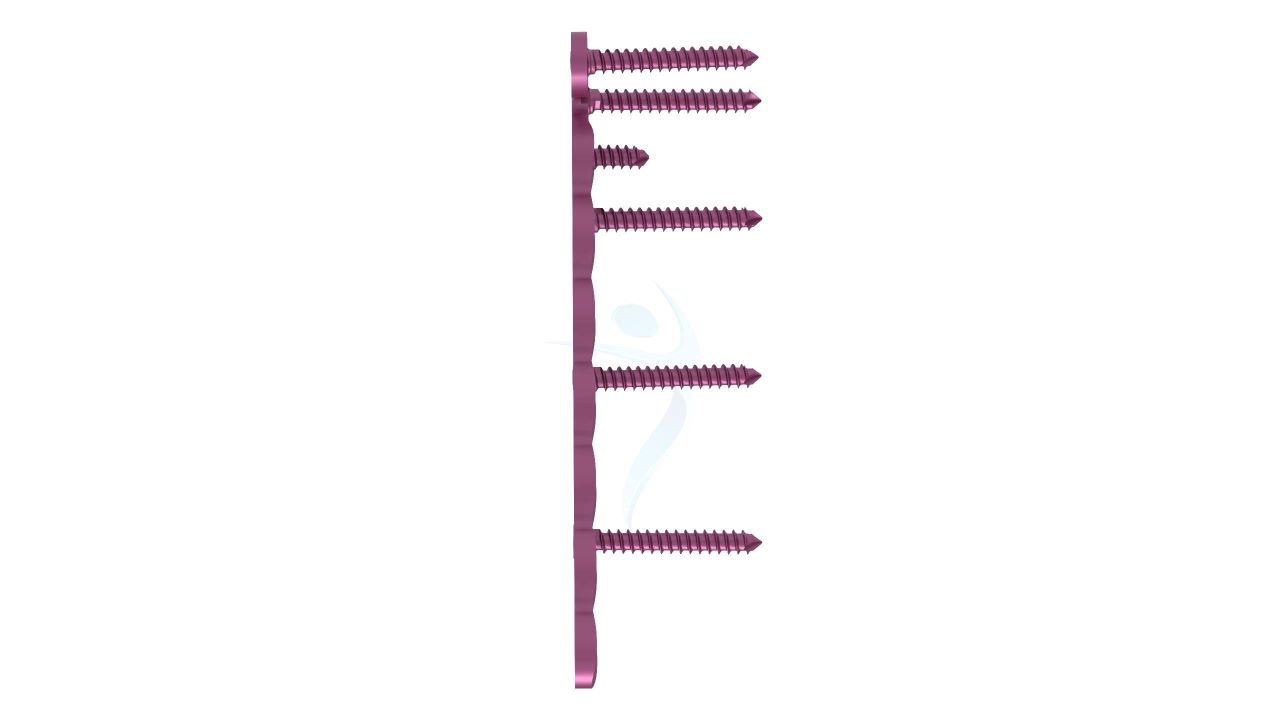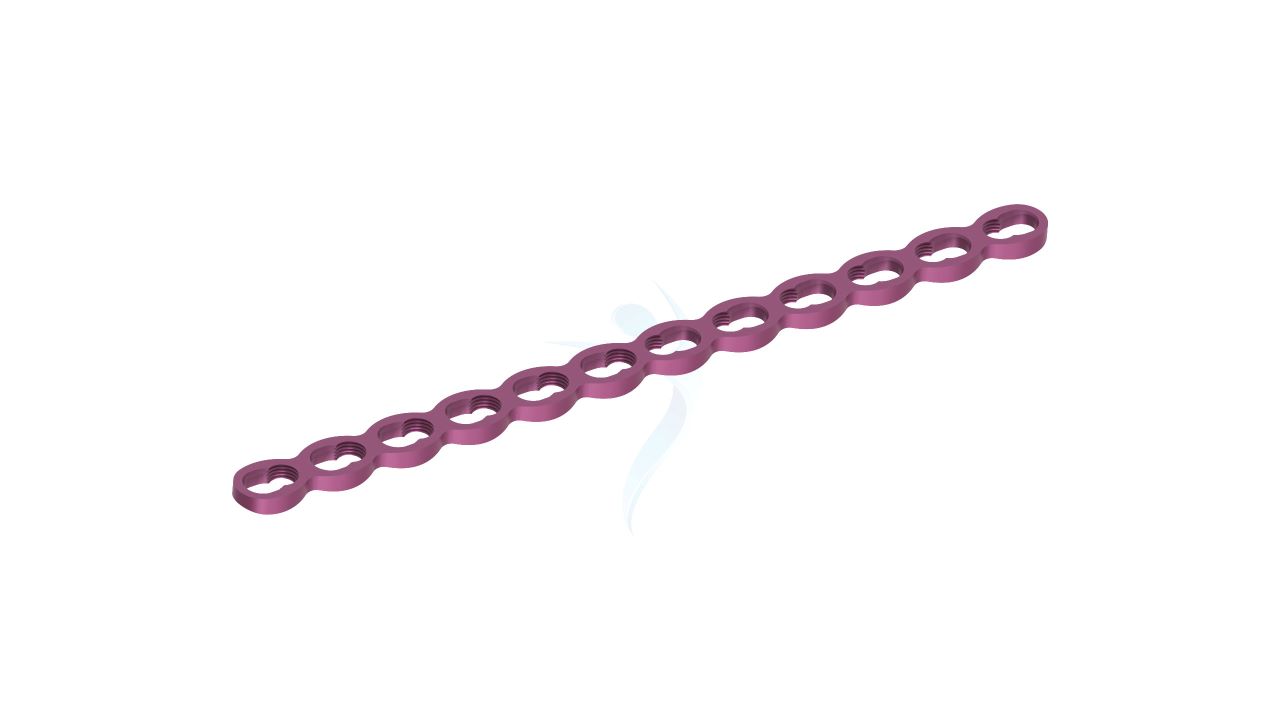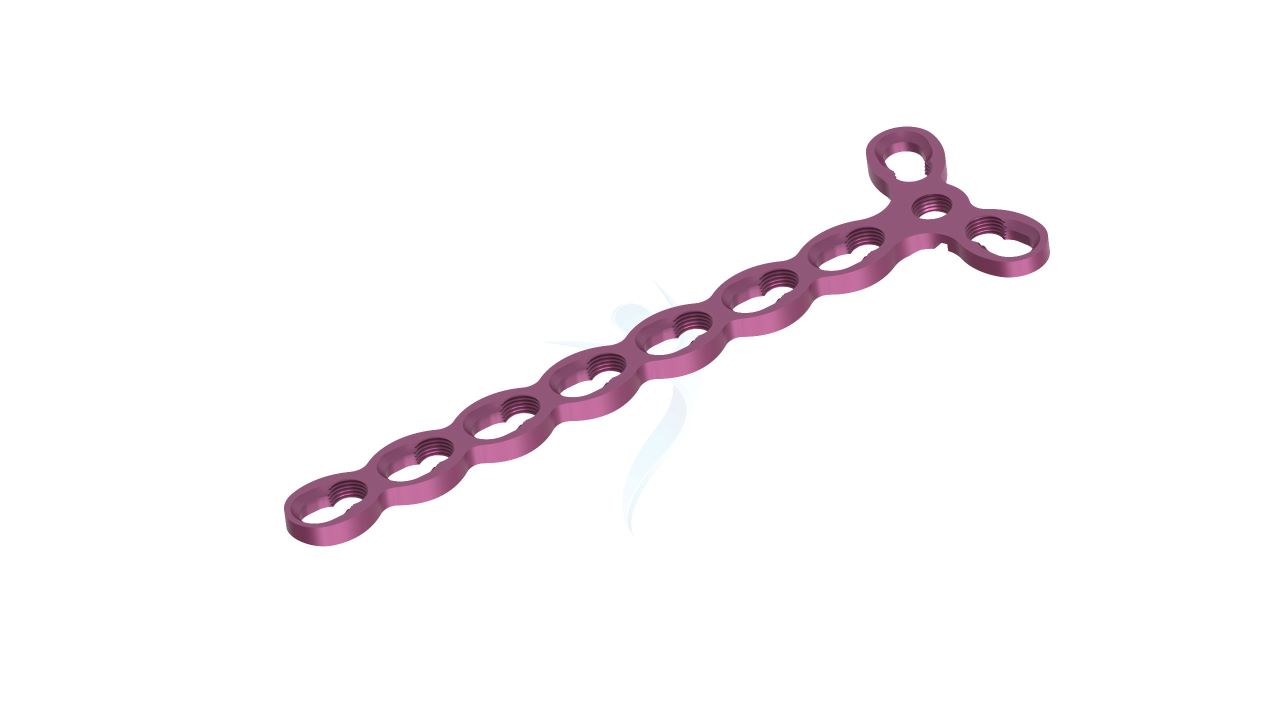Compact Hand Plates - 2.0 mm T - Plate
Product Overview
Introducing our cutting-edge orthopedic implant, the Compact Hand Plates - 2.0 mm T-Plate. Engineered for precision and reliability, this innovative implant is designed to provide exceptional stability and support in orthopedic surgeries. Crafted with the highest quality materials, it ensures long-lasting durability while promoting optimal bone healing. Its compact design allows for easy integration into surgical procedures, making it an ideal choice for orthopedic surgeons seeking superior implant hardware. Trust in our T-Plate to enhance surgical outcomes and patient well-being, setting new standards in orthopedic care.







Product Uses
- Fracture Fixation : It is used to stabilize and align fractured bones in the hand, wrist, or forearm, promoting proper healing.
- Osteotomy :Surgeons employ this implant during bone realignment procedures to correct deformities or misalignments.
- Bone Graft Support : The T-Plate offers stability for bone grafts, aiding in the fusion of bones and the restoration of function.
- Hardware Removal : It can facilitate the removal of previously placed orthopedic hardware that is no longer needed
- Joint Reconstruction : In some cases, the T-Plate may be used in joint reconstruction procedures, enhancing joint stability and function.
Product Specification
- Material : High-quality medical-grade titanium alloy for durability and biocompatibility.
- Plate Thickness : 2.0 mm, providing strength and stability while minimizing tissue irritation.
- Plate Design : T-shaped design for versatility and secure bone fixation.
- Hole Configuration : Multiple holes for screws, allowing for customizable placement and secure fixation.
- Screw Compatibility :Compatible with standard orthopedic screws for ease of use in surgery.
Compact Hand Plates - 2.0 mm T-Plate Sizes
Comprehensive Guide for Compact Hand Plates 2.0 mm T - Plate
- Patient Evaluation : Confirm the patient's medical history, including any allergies, previous surgeries, or underlying medical conditions.Assess the patient's hand function, range of motion, and overall hand health.
- Imaging and Diagnosis : Perform X-rays, CT scans, or MRI scans to assess the extent and nature of the hand injury or condition.
- Implant Selection : Choose the appropriate size and type of Compact Hand Plates - 2.0 mm T-Plate based on the patient's anatomy and the surgical plan.
- Surgical Planning : Collaborate with the surgical team to develop a comprehensive surgical plan, including the implant placement, incision site, and anesthesia type.
- Informed Consent : Obtain informed consent from the patient after explaining the surgical procedure, potential risks, benefits, and alternative treatments.
- Preoperative Instructions : Advise the patient to refrain from eating or drinking for a specific period before the surgery.
- Patient Preparation : Administer anesthesia according to the planned method (local, regional, or general) and ensure the patient is adequately sedated or numb.
- Surgical Incision : Make a sterile incision at the predetermined site, ensuring proper exposure of the affected area.
- Implant Placement : Prepare the bone surfaces for implant placement by cleaning, reshaping, or removing damaged tissue.Securely fix the "Compact Hand Plates - 2.0 mm T-Plate" to the bone using appropriate screws and instruments.
- Closure : Close the incision with sutures, staples, or other closure techniques, ensuring proper wound hygiene.
- Post-Operation Imaging : Perform post-operative X-rays to confirm the correct positioning of the implant and assess its stability.
- Immediate Recovery : Monitor the patient in the recovery area until they are conscious and stable.Assess circulation, sensation, and movement in the affected hand.
- Pain Management : Administer pain relief medications as prescribed to manage post-operative pain.
- Immobilization : Depending on the surgical approach and implant placement, immobilize the hand using a splint, cast, or external fixation device as necessary.
- Physical Therapy and Rehabilitation : Develop a rehabilitation plan to aid the patient in regaining hand strength and function.
- Wound Care : Instruct the patient on wound care procedures, including keeping the incision site clean and dry.
- Long-Term Monitoring : Continue monitoring the patient's progress and assess the long-term performance of the "Compact Hand Plates - 2.0 mm T-Plate" through periodic follow-up appointments and imaging studies.













.png)




